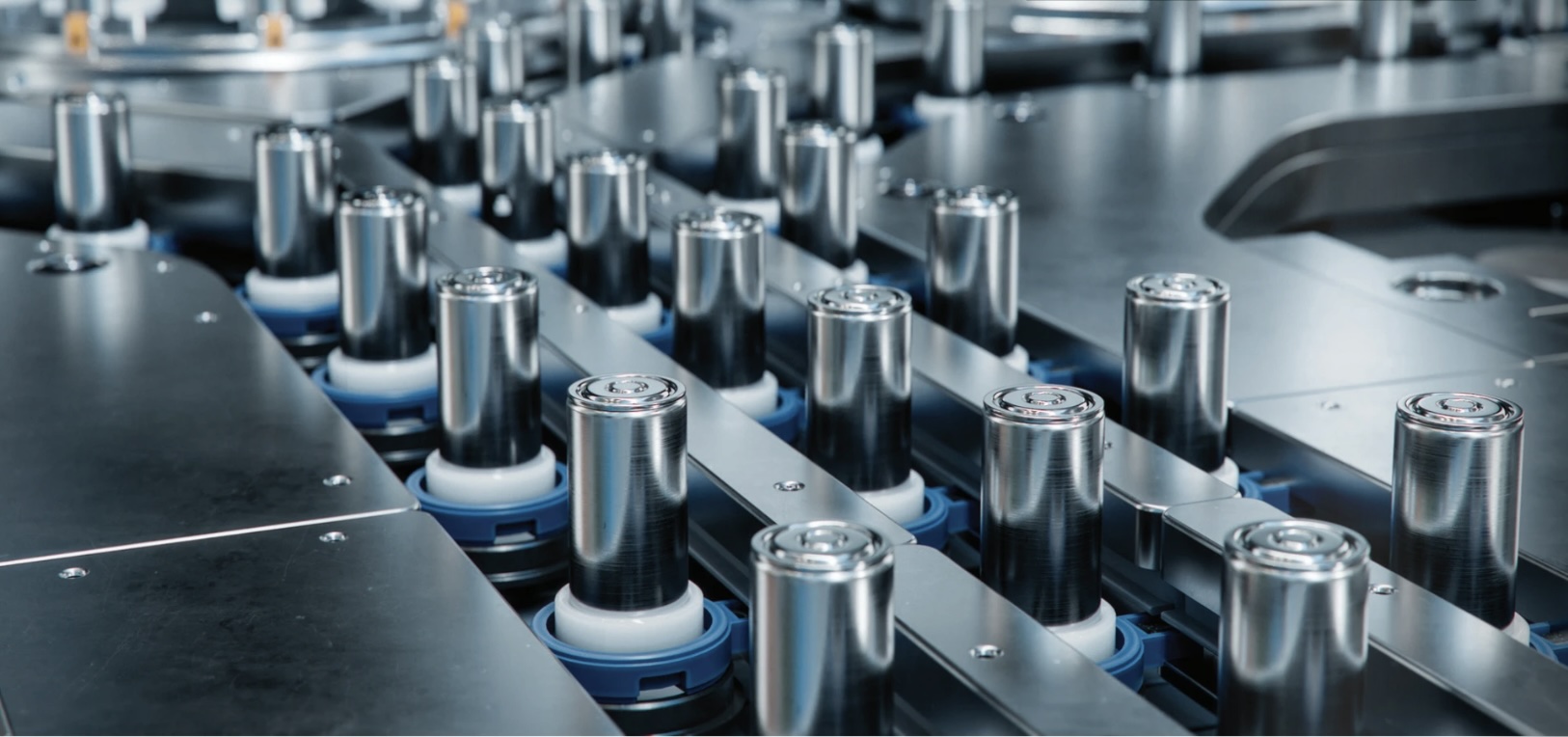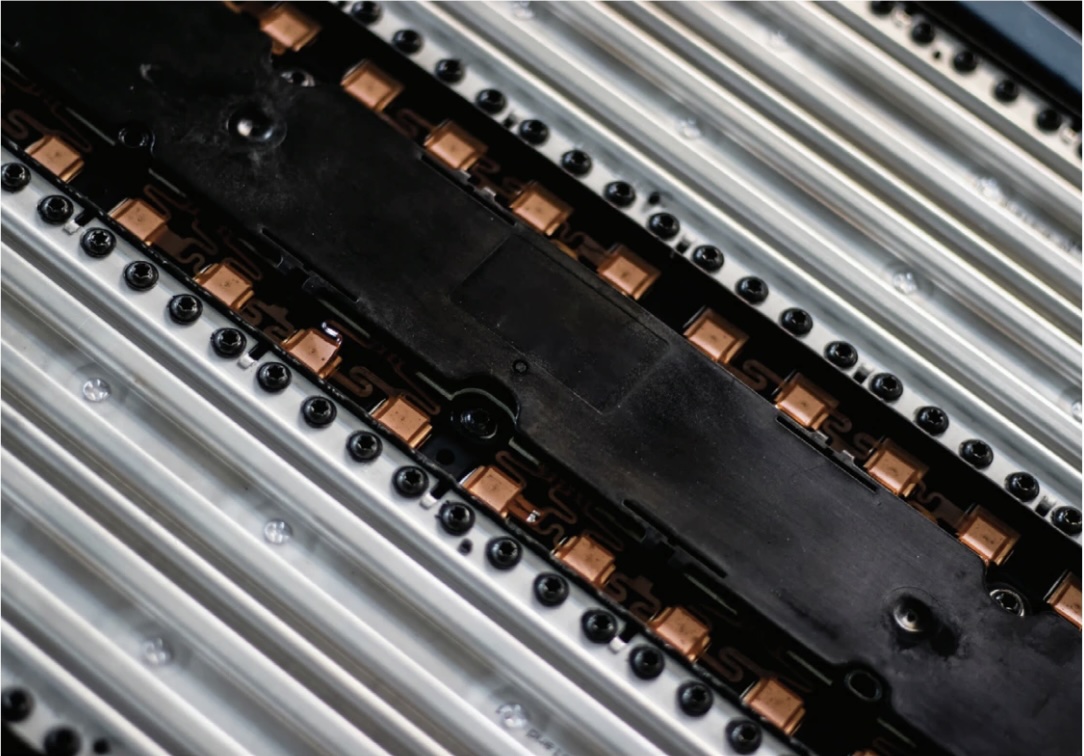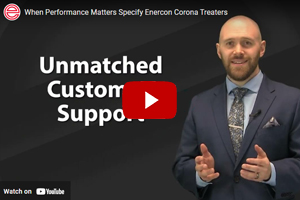Enhancing Battery Production with Advanced Cleaning and Static Control
- Published: February 09, 2025

By Alicia DiDomenico, Digital Marketing Specialist, Simco-lon
In today's fast-evolving battery production industry, maintaining cleanliness and effective static control is essential for quality, efficiency and safety. The demand for reliable battery manufacturing has surged with applications ranging from consumer electronics to electric vehicles. However, critical production stages, such as electrode manufacturing and cell assembly, are highly sensitive to contamination. Even the smallest particles can interfere with charge transfer, impacting battery integrity and performance.
Key Stages with Static and Contamination Challenges
Battery cells are intricate assemblies composed of anodes, cathodes, separators and electrolytes. Contaminants like dust, metallic particles and moisture can adhere to surfaces due to static attraction, which commonly occurs during roll-to-roll processes.
High-speed material handling builds up static charges, drawing in particles that compromise battery components. This interference reduces charge capacity and creates safety hazards, making it crucial to maintain a contaminant-free environment to ensure each cell's reliability and longevity.
As battery technology advances, the need for stricter contamination control grows. Today's high-performance batteries require exceptionally clean production environments to meet both operational demands and customer expectations for durability and safety. By targeting the right areas of production for static and contamination control, manufacturers can better safeguard their products from performance issues or premature failure in the field.
Sources of Contamination in Battery Production
Contamination in battery production can occur through various means, particularly during the slitting of foils, environmental exposure and operator handling. The most common contaminants include metallic and oxide particles - such as chrome, iron, nickel and cobalt — that are generated during processing.
Another frequent source of contamination is the equipment used in the production line itself. Machines that handle or transport sensitive materials can shed tiny metal particles over time, especially in high-speed environments. These particles then become airborne, adhering to surfaces via static attraction, which underscores the importance of comprehensive static control across the entire production area.
These metallic particles are highly active and can lead to self-discharge or other faradaic reactions, especially in the cathode. Their hardness can also cause short circuits when particles pierce the separator, allowing the anode and cathode to make contact. In addition, these particles may cause latent defects that are not detected during inspection but result in failure during end-user operation, posing risks in safety-critical applications.
In the battery manufacturing process, high charge capacity and longevity are essential. Uniform charge transfer between electrodes is necessary for optimal performance. However, any charge transfer variations caused by particle contamination reduce the charge capacity and number of charge/discharge cycles a battery can sustain, ultimately shortening its lifespan.

The Importance of Static and Contamination Elimination
During assembly, the surfaces of both electrodes and separators must be free of contaminants before stacking, winding, interleaving or laminating. Static eliminators neutralize the static charges that attract dust to these surfaces, while contact cleaning systems, such as elastomer rollers, remove particles effectively. These rollers break the boundary layer of air by contacting the surface run over to be cleaned, capturing particles and transferring them to an adhesive roller for permanent removal, ensuring that sensitive surfaces remain free of contaminants.
Systems like contact cleaning rollers paired with static neutralizing bars address contamination at multiple stages of battery production. This combination prevents particles from adhering to surfaces and reduces charge transfer disruptions. It is especially important during roll-to-roll coating stages, where the particles can embed into coatings and impact battery efficiency.
Enabling Enhanced Battery Production
Technologies like neutralizing bars and web cleaning systems are essential in modern battery production. These systems ensure that battery components are free of contaminants, resulting in higher quality, safer and more reliable products. Battery manufacturers have increasingly adopted advanced cleaning and static control systems to reduce defects and improve overall operational efficiency.
- Static Neutralizing Bars: These bars neutralize charges on electrode surfaces, preventing particles from clinging to materials. Effective static control ensures that materials stay clean throughout the assembly process, contributing to improved charge transfer and battery performance. By using monitoring devices, manufacturers can adjust neutralization levels in real-time, responding to fluctuations in static build-up and ensuring an uninterrupted, optimized assembly line.
- Contact Cleaning Systems: Elastomer rollers paired with adhesive capture rollers efficiently remove particles from sensitive surfaces, such as anode and cathode films. This technology is crucial in the electrode fabrication phase, where metallic particles can damage separators and lead to short circuits. These rollers provide consistent cleaning even at high speeds, maintaining surface integrity without slowing down production.
- Contamination Prevention During Coating: Ionic contamination risk is highest during mixing of the active matrices and electrolyte. Additionally, preventing moisture from entering the coating head is critical to avoid dewetting of electrodes, which can cause inconsistencies in charge transfer. Real-time monitoring of humidity and ensuring a dry environment during coating protects the integrity of the electrodes.
By adopting these advanced cleaning and static control technologies, battery manufacturers can produce cleaner, more reliable batteries. Reducing contamination in critical stages not only enhances product quality but also improves safety and cost efficiency, paving the way for a cleaner, greener future driven by robust, high-performance batteries.
About the Author
Since 1936, Simco-lon has been a leader in static control solutions, delivering innovative technologies to improve safety, quality and efficiency in manufacturing. With decades of expertise, Simco-lon offers a range of solutions, including static neutralizing bars, contact cleaning systems and web cleaning systems which are essential for contamination and static management in sensitive production environments like battery manufacturing. Reach Simco-lon at This email address is being protected from spambots. You need JavaScript enabled to view it..





